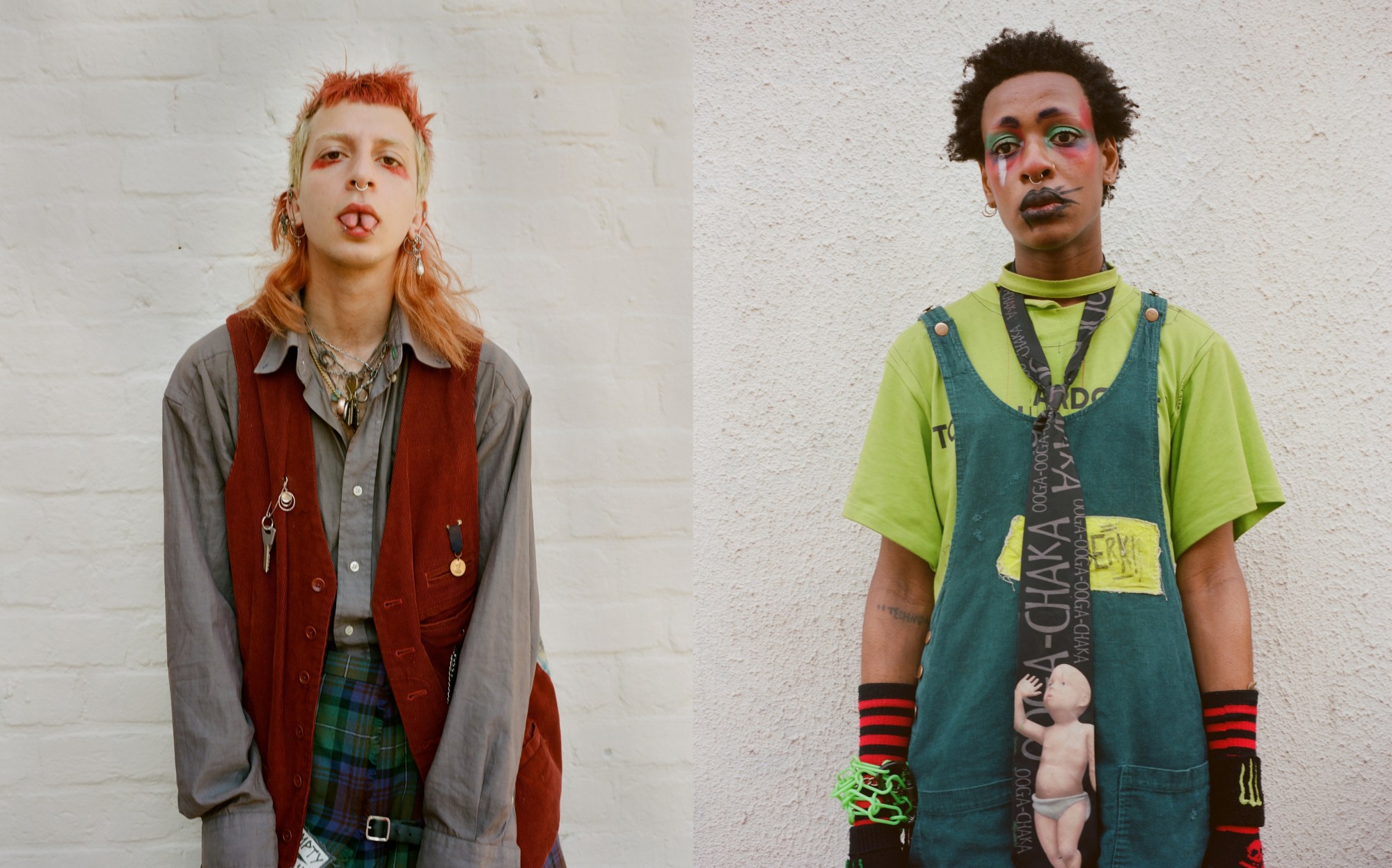When punk was spat out onto the scene in the 70s, certain bands were flirting with Nazi imagery. The Sex Pistols’ Sid Vicious was often photographed wearing a T-shirt emblazoned with a swastika and Siouxsie Sioux sometimes wore a swastika armband on stage. White working-class discontent sometimes found expression through violence and conflict with male-dominated punk gigs often erupting into riots, especially when the far-right National Front were in attendance. But at the same time, punk’s embrace of individuality and defiance made its music and aesthetics a refuge for anyone deemed an outsider by society at large. Queerness has always been part of the punk movement, taking off in the 1980s when Queercore distinguished itself with bands like The Apostles in London and Dicks in the US.
Conventional punk aesthetics — ripped fabric, safety pins, leather jackets — can seem pretty commercialised these days, but punk values are still going strong, as reflected in London’s burgeoning LGBTQ+ punk community. Rejecting the establishment and speaking truth to power are as important as ever. Take queer punk band Forrest Flowers, whose song “Destroy the State” is a raucously catchy yet curiously vulnerable call to arms. Queer punk is as much about affirmation as it is about anger and anarchy.
Here, we speak to London’s queer punks about what the subculture means today, queering its aesthetic and how it can help mobilise change.
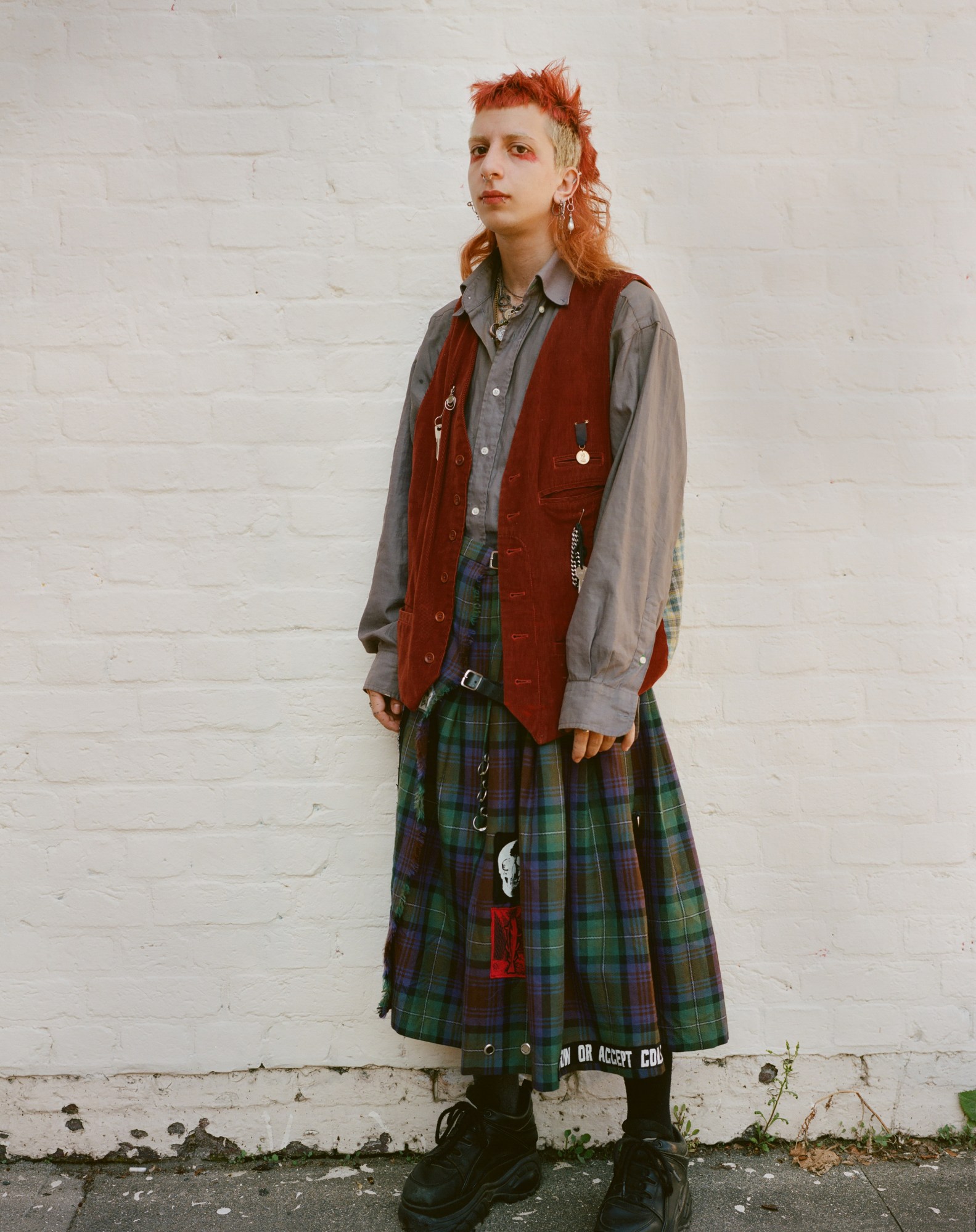
What does punk mean to you? To me, it’s about questioning authority and following your own moral compass. Enjoy life without hurting others, support each other and those in need. Which aesthetics do you borrow from traditional, early punk scenes and which have you invented yourself or borrowed from other subcultures? I love my DIY. Classical punk safety pins, chains, keys, patches, etc. I fucking love utility as an aesthetic. I mix it a lot with medieval and regal fashion like tiaras, pearls, flower prints. While in many ways punk and queerness go hand in hand, early punk scenes struggled with racism, sexism and homophobia. Do you feel that toxic hypermasculinity still exists within parts of the scene today or is punk in 2020 a more open and inclusive space? There’s definitely a stigma still in place that punks are supposed to be violent assholes. Even Johnny Rotten complained about it! I’ve definitely had instances while performing of people trying to cause a racket just for the sake of it. It’s all great as long as it’s in good fun, otherwise why direct it toward people that are literally here for the same reason?
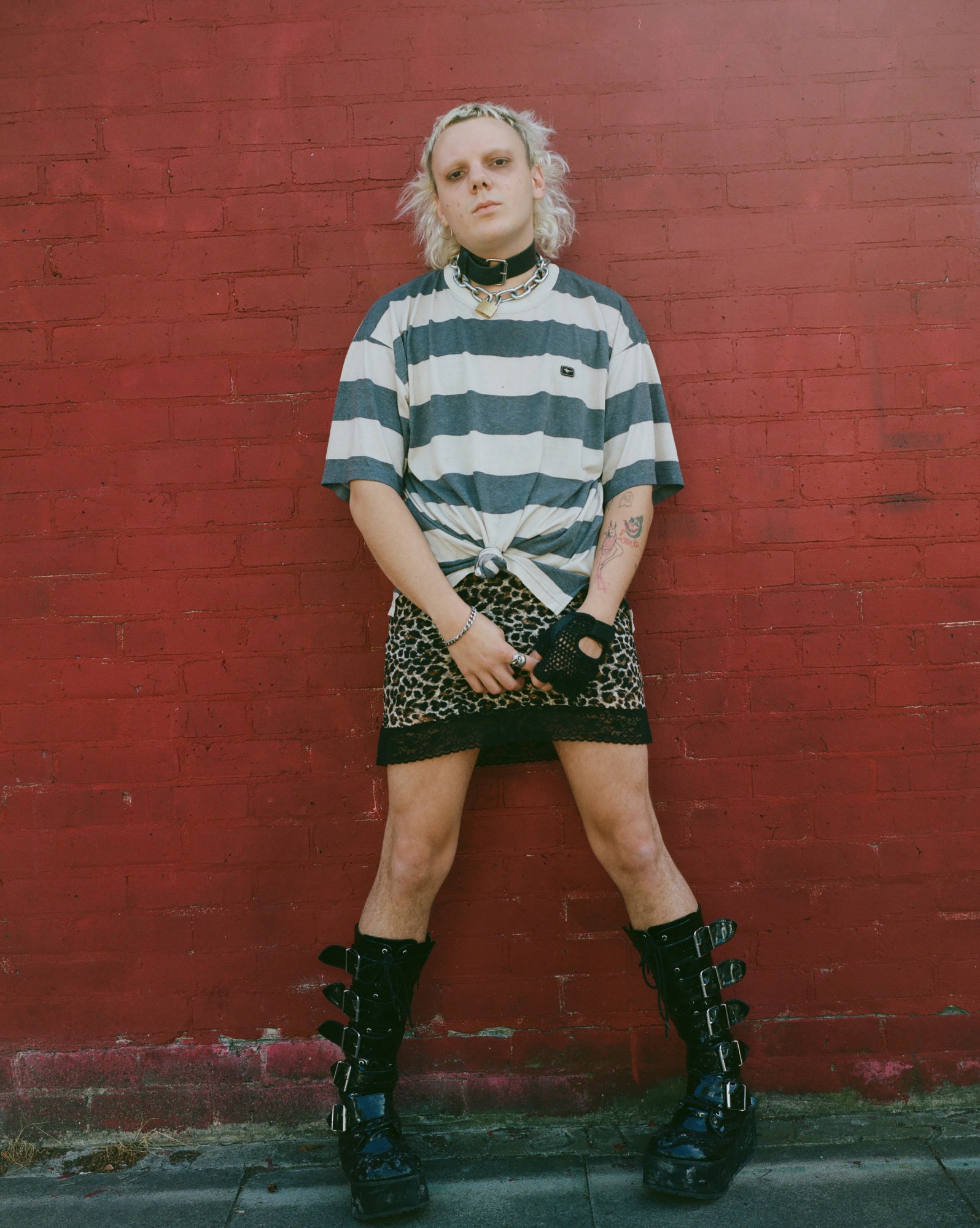
What does punk mean to you? For me personally, the rejection of socially conformist attitudes towards gender and sexuality are the most important. At its core, it’s about expressing your true identity, regardless of other people’s attitudes. Even though that can be difficult with all the queerphobia in the world, surrounding yourself with your community and uplifting each other is also very important to me. Who embodies punk? Pete Burns is my divine inspiration in all ways. His approach to gender, sexuality, music and society at large was incredibly ahead of its time. He was an incredibly innovative thinker that I admire deeply. I also love really transgressive queer icons like Divine. Which aesthetics do you borrow from traditional, early punk scenes and which have you invented yourself borrowed from other subcultures? I’m a huge fan of when punk weirdly kind of sonically and aesthetically crossed over into the mainstream pop landscape in the early-mid 2000s and resulted in stars like Avril Lavigne, bands like t.A.t.u and brands like Punkyfish. I love the fishnets and the stripy socks, they really hit the sweet spot.
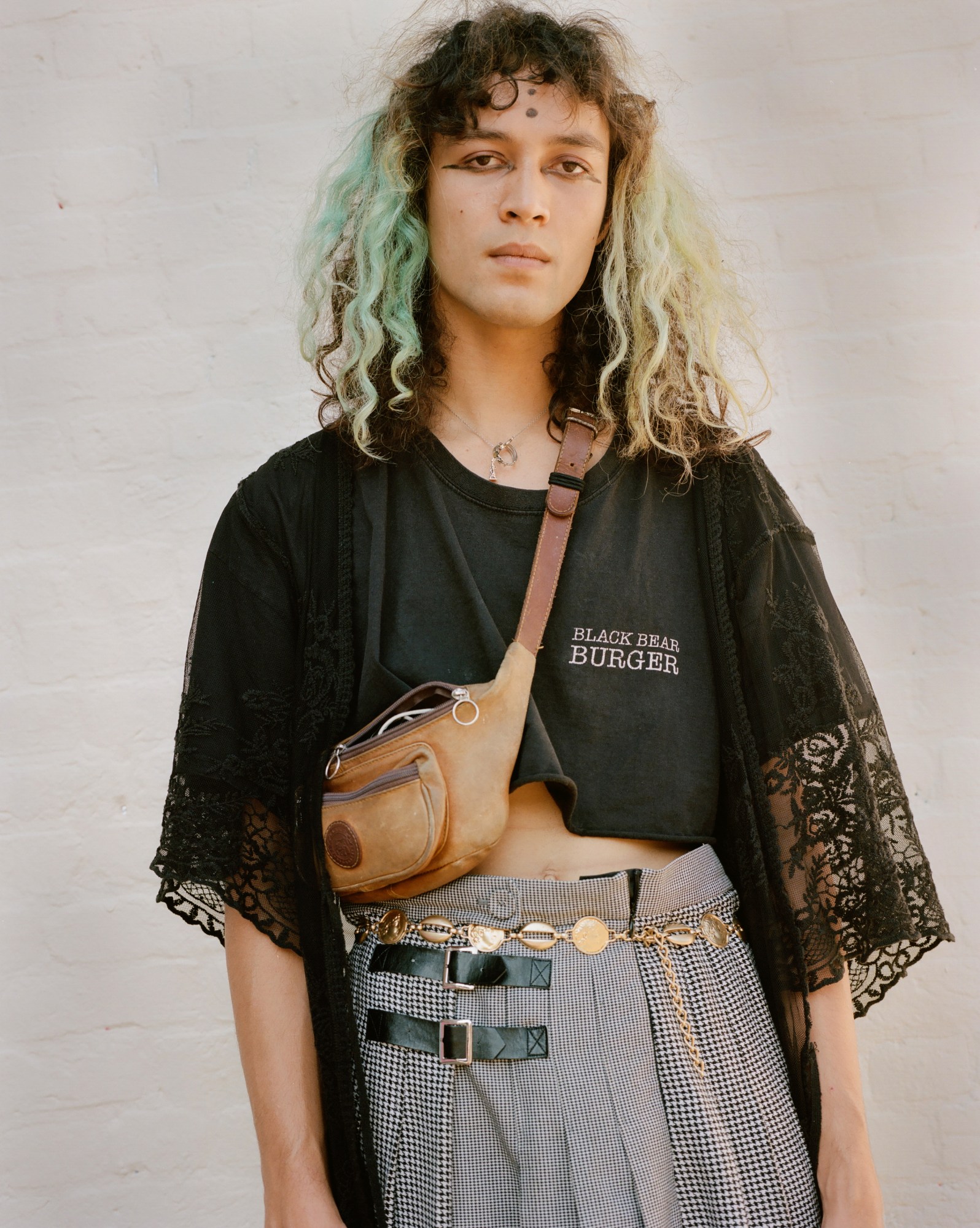
What does punk mean to you? It’s more of a mindset than anything else. It’s definitely gone past being just OG punk music and mohawks and shit. To me, it means not just blindly following whoever is in front of you. It’s about freedom of thought and expression as well as looking out for those around you. How has your look evolved over time? As I’ve got older, I’ve become more comfortable with wearing feminine clothing and kind of ditched most of the metal/punk motifs. The hypermasculinity and harassment I tended to get in that scene pushed me away from wanting to associate with it. While in many ways punk and queerness go hand in hand, early punk scenes struggled with racism, sexism and homophobia. Do you feel that toxic hypermasculinity still exists within parts of the scene today or is punk in 2020 a more open and inclusive space? It’s absolutely still an issue in certain scenes, but less so for punk. Especially with younger punk bands. It seems a lot more queer-friendly. At most of the shows I’ve been to, they’ve been sound. Obviously, there is still room for improvement. I feel that comes down to teaching older fans about queer people though, as a lot of bullshit I tend to hear comes from a lack of understanding, rather than malicious intent. I got love for y’all but stop straight asking me about my genitals as an icebreaker, thanks hun. What punk phrase or motto do you live by? Fuck Morrissey.

Big Joanie (Chardine, Stephanie, Estella)
What does punk mean to you? Stephanie: Punk for me has always been about having the power to create rather than consume culture. Estella: A way of life I guess! Chardine: Primarily I would say that it is a general sense of not following the crowd and thinking for yourself. Having a go at something without needing permission. How did you get into punk? Stephanie: I found riot grrrl music and then there was no looking back. Having a mix of political and punk was the perfect formula for a teenager with a lot of emotion to let out. Estella: In my early teens, getting into ‘greebo’ music and just progressing from there. Chardine: Someone made me a mixtape – an actual tape, it was the late 90s – of Nirvana when I was 13 and it started from there. While in many ways punk and queerness go hand in hand, early punk scenes struggled with racism, sexism and homophobia. Do you feel that toxic hypermasculinity still exists within parts of the scene today or is punk in 2020 a more open and inclusive space? Stephanie: I think the punk scene has become more self-aware but there’s still a long way to go. We’ve tried to create our own space within the scene so like-minded people can join us and get away from any weirdness. Estella: I think those who have faced racism, sexism, homophobia, ableism, fatphobia and other prejudices have sought to claim their own spaces within the punk scene, as opposed to waiting for the scene to realise of its own accord that inclusivity will only ever be a benefit. I’m not sure how to fully exorcise toxic masculinity from the scene when it still exists within the wider community, but I try to spend my time in spaces where marginalised folks are supported, affirmed, and actively welcomed. Chardine: I think it’s important to clarify that when we are talking about ‘hypermasculinity’ we are talking about cis men and not queer masculine-of-centre people and trans men who have also historically been excluded from those spaces. Sometimes we have supported bands where the audience feels a need to take their tops off and bash into each other which is fine. However, is that being considerate for other people in the crowd? I’m glad other bands, including all-male bands, are starting to talk about this and address. It gives me hope that the punk scene will continue to keep challenging itself.
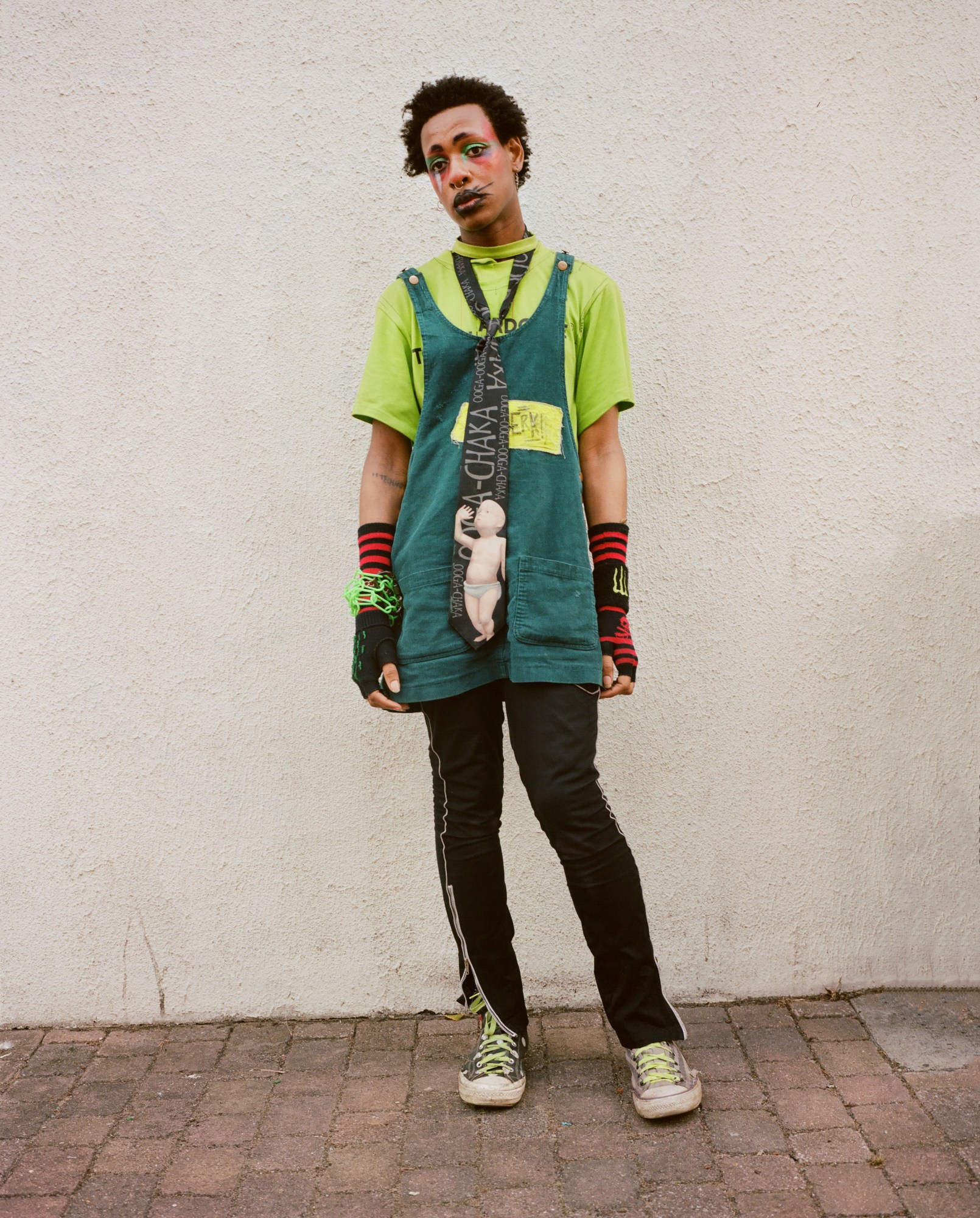
What does punk mean to you? Punk is a set of techniques and styles employed by the disenfranchised and abjected. It’s a rejection of society. Punk is a war cry; not a cry out for help but a scream, an expression of utter frustration. Punk is pent up energy expended without measure. Punk is an explosion of life, a resistance to the zombification of consumer capitalism, the banality of 70s neoliberalism, the dull grey monotones of British council architecture. Who embodies punk? SCUM (Society for the Cutting-Up of Men) by radical whoredyke revolutionary Valerie Solanas is inextricably linked to punk attitude. Her explosive cutting-up and rhetorical dissection of the male condition in the SCUM Manifesto is an unabashed one-person revolution. Valerie Solanas weaponises the scream that is at the heart of punk in her attack on patriarchal society from all angles. She declares war on all the central figures of patriarchal culture, the (male) artists, philosophers, scientists, and politicians whose hegemony makes life “an utter bore … to women.”
Credits
Photography Heather Glazzard
